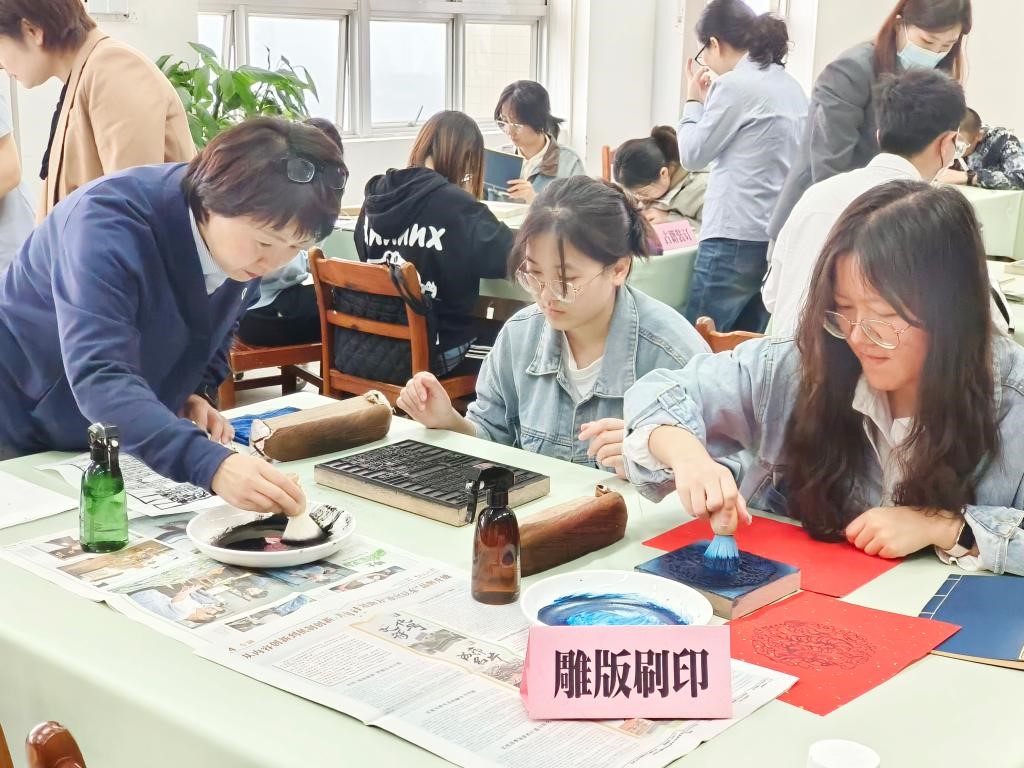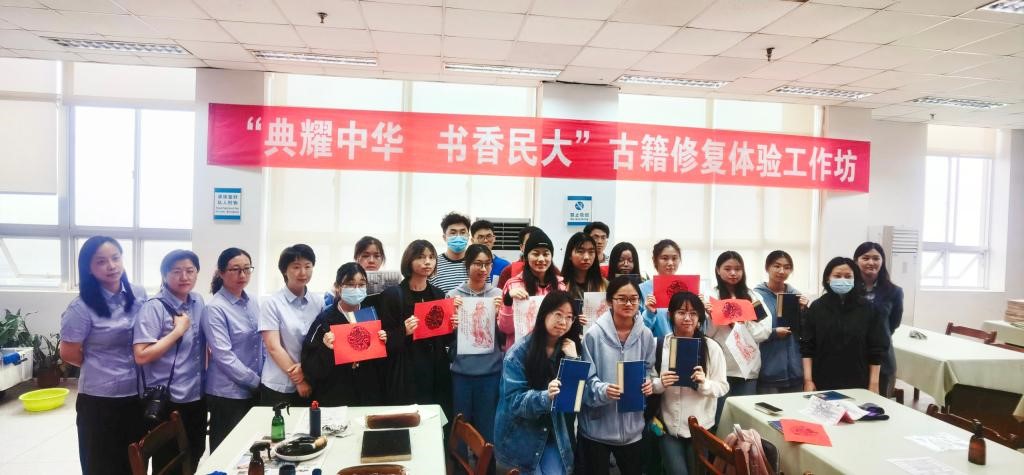“This was my first time experiencing the process of restoring ancient books. After participating in this activity, I gained a deeper appreciation for the meticulousness and challenges involved in ancient book restoration, as well as a profound admiration for the captivating art of this technique,” said Hu Bingqing, a 2022 doctoral student in Classical Literature from the School of Literature, Journalism and Communication. On the morning of April 30th, a unique ancient book restoration experience event took place at the university library. The event was divided into two sessions, each featuring two experiential activities, which are “Ancient Book Binding” and “Woodblock Printing”. The library specially invited Researcher Sheng Lan, an assistant instructor at the Hubei Center for Inheriting Ancient Book Restoration Techniques under the National Center, and a representative inheritor of the intangible cultural heritage of bookbinding and restoration in Hubei Province, along with her team, to provide guidance on campus.
“The ancient Chinese art of book binding has a long history and diverse styles, including scroll binding, whirlwind binding, folded binding, butterfly binding, and case binding. Among these, thread binding is the mainstream binding method for ancient Chinese books. Today, you will experience this thread binding technique,” explained Researcher Sheng Lan and her team members at the event. They demonstrated the process of ancient book binding, step by step, from paper rolling, needle threading, hole punching, to needle threading.
“I had never encountered the paper nails used in thread-bound books,” said Wu Ruiwen, a 2021 undergraduate student majoring in Ideological and Political Education at the School of Marxism. Holding her self-bound book, she added, “In the thread binding experience, we started from the first hole, went through the binding thread, and returned to the starting point, completing our own book. It was an interesting process.”
During the woodblock printing activity, students personally experienced the processes of ink application, paper placement, ink application, rubbing, and lifting, allowing the transformation of text and images from the woodblock to paper. Researcher Sheng Lan stated, “We hope that by creating their own books and participating in woodblock printing activities, students can bridge the gap between themselves and ancient books, as well as traditional culture. We also hope that the concept of ancient book preservation can resonate with the students, raising more awareness and recognition for our efforts in preserving these invaluable artifacts.”

Instructors Guiding Students in Woodblock Printing Experience.
Photographed by Luo Manzhen
Ms. Xu from the Rare Books and Special Collections Department of the university library introduced that a total of 40 students from various schools participated in this experiential activity, with many others expressing interest in attending future events. This marked the first time that the university library collaborated with the Hubei Provincial Library to bring the ancient book restoration techniques to campus, aiming to enhance students’ understanding of this art form and promote the inheritance of China’s outstanding traditional culture.

Group Photo of Participating Students with Provincial Library Instructors.
Photographed by Yu Hua
Edited by Liu Qiong, reviewed by Lei Changsheng, May 6, 2024